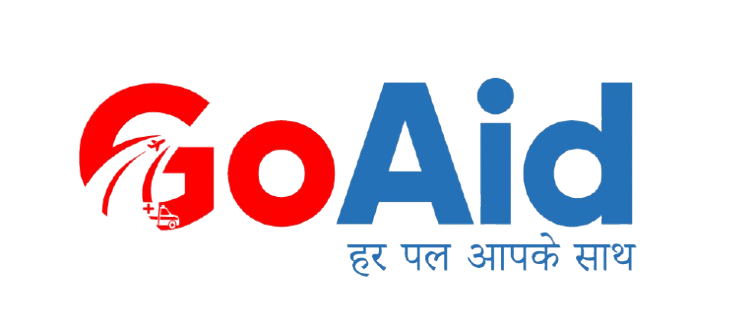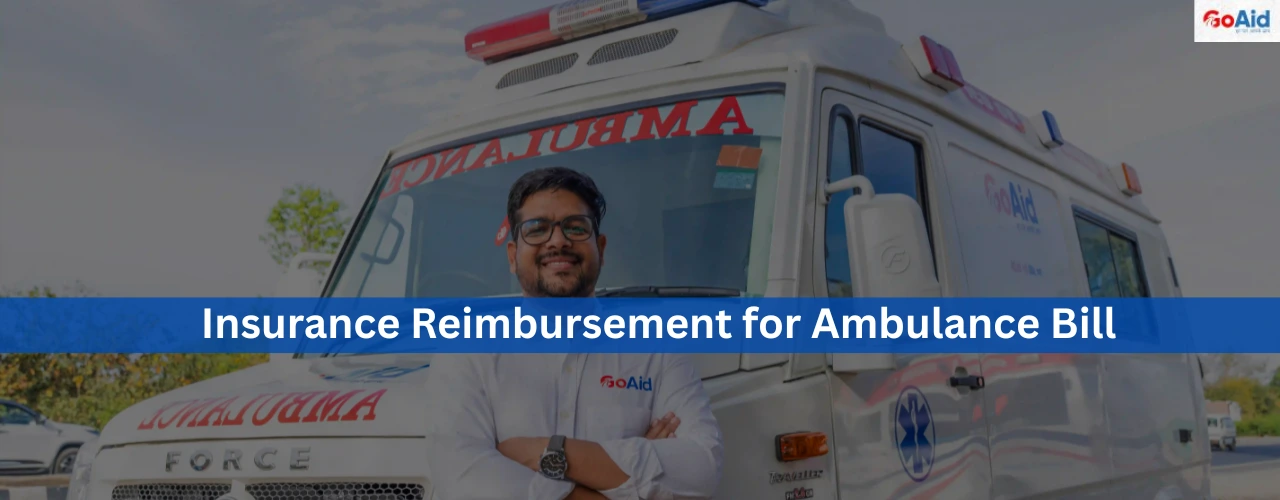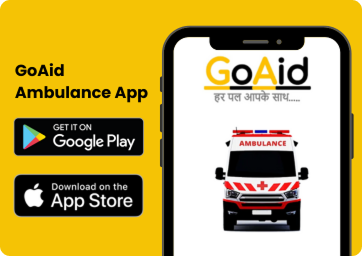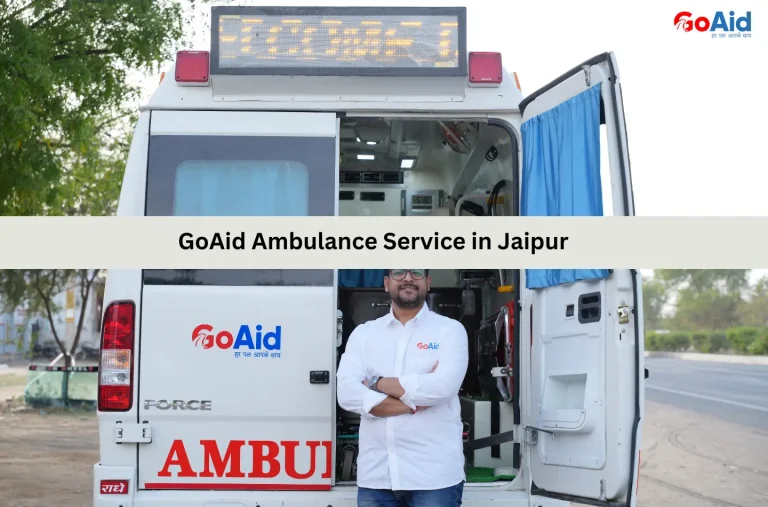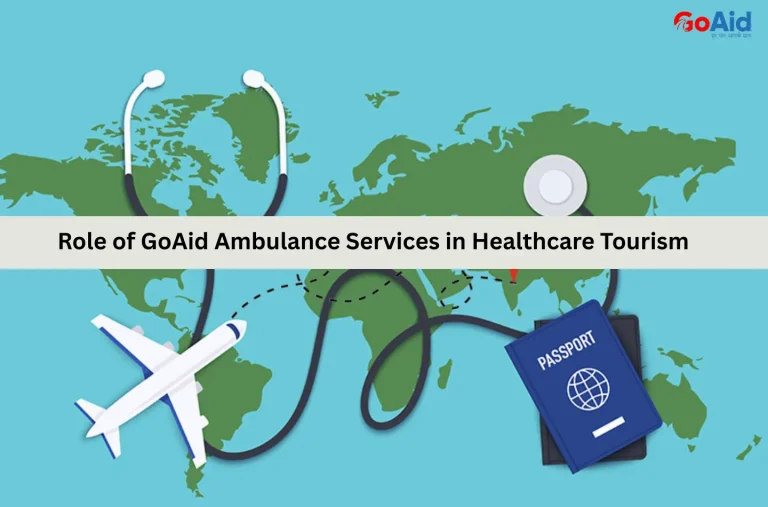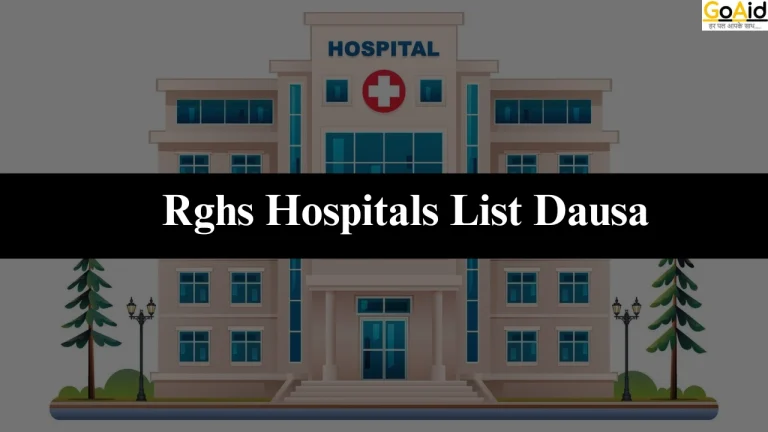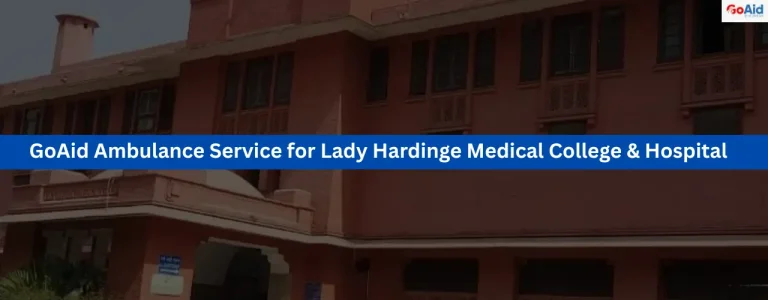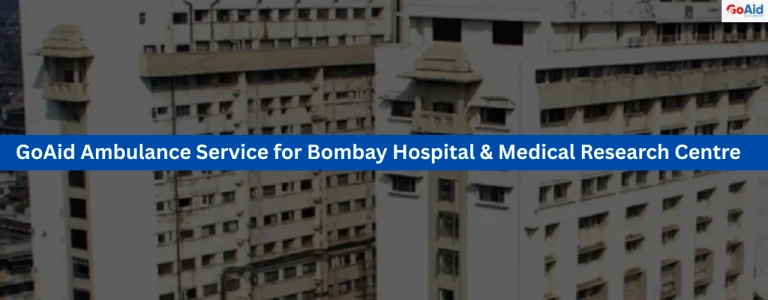In a medical emergency, ambulance services play a very important role, but the financial problems can be a burden. GoAid Ambulance Service can help you during a critical time by easing the pressure. You can claim insurance reimbursement for ambulance bills. But one should have the right knowledge and all the documentation┬Ā
In this blog, we are providing you with all the important information about the┬Ā Insurance Reimbursement for Ambulance Bill. This will help you to ease the financial burden, also help you to take the right decision during critical times. Are you interested in knowing about it? If yes, then why wait
LetŌĆÖs start reading
What is Insurance for Ambulances?
Insurance for ambulances refers to the financial coverage offered under health insurance plans for emergency transport services. Most insurance providers offer reimbursement for ambulance services, including those from private providers like GoAid. Whether itŌĆÖs a basic life support (BLS) or ICU ambulance, the bills can be claimed under the health insurance cover for ambulance.┬Ā
This ensures that your emergency transport doesnŌĆÖt drain your savings. GoAid Ambulance Insurance ties into this coverage, offering quick, reliable transport with paperwork that supports a smooth insurance claim for ambulance bills. Always verify if your policy includes insurance coverage for ambulance services before relying on it.
Why Insurance Reimbursement for Ambulance Services Matters?
Ambulance services can be costly during emergencies. Timely insurance reimbursement helps reduce the financial burden. HereŌĆÖs why understanding reimbursement for ambulance services is essential for patients and their families.
- Reduces Out-of-Pocket Expenses: Ambulance bills can run high, especially for ICU or long-distance services. Insurance coverage for ambulance ensures that policyholders arenŌĆÖt forced to pay everything themselves.
- Promotes Timely Medical Attention: With GoAid Ambulance Insurance, patients are more likely to seek immediate help without fearing the cost, thus avoiding delays in treatment.
- Ensures Quality Ambulance Services: Reimbursement policies encourage the use of high-quality ambulance services like GoAid, which offer advanced facilities and trained paramedics.
- Covers a Range of Emergencies: Health insurance cover for ambulance often includes different types of emergenciesŌĆöaccidents, strokes, cardiac eventsŌĆömaking sure you get assistance no matter the situation.
- Encourages Regular Policy Checks: To get ambulance bill reimbursement, policyholders must understand their health planŌĆöthis encourages awareness and regular policy reviews.
- Builds Trust in Healthcare: When insurance claims are processed smoothly, it builds public trust in both the insurance and emergency response systems.
- Supports Nationwide Access: GoAid provides services in multiple cities, and with insurance reimbursement, more people can access these services without financial strain.
How to Get Insurance for Ambulance Bills?
An ambulance insurance reimbursement is simple if you follow the correct process. Here are the steps you must take to ensure a successful insurance claim for ambulance services.
- Check Your Health Insurance Policy
- Confirm whether ambulance services are covered and understand the termsŌĆösome only cover emergency cases or up to a limit.
- Use Approved Ambulance Providers
- Some insurers reimburse only if the ambulance service is from a recognized provider like GoAid Ambulance Insurance.
- Get a Proper Bill and Documentation
- Collect a GST-compliant bill from GoAid. Documentation is essential for ambulance bill reimbursement and must match your insurer’s claim checklist.
- Inform the Insurance Provider Early
- Notify your insurance company about the ambulance usage as early as possible, preferably on the same day of the incident.
- Maintain Hospital Admission Proof
- In many cases, reimbursement for ambulance services is granted only if the patient is admittedŌĆökeep admission/discharge slips ready.
- Submit Claim Timely
- Most insurance companies allow only 7 to 30 days for post-hospitalization claims. DonŌĆÖt delay your insurance claim for ambulance services.
- Track Your Claim
- Use the insurerŌĆÖs app or website to track your ambulance reimbursement process and respond to any queries quickly.
Details about Insurance Reimbursement for Ambulance Bill
Reimbursement for ambulance services is a benefit available in most health insurance plans. GoAid Ambulance Insurance makes it easier by providing proper documentation and bills that comply with insurer standards. The coverage usually ranges from Ōé╣500 to Ōé╣5000 per trip, depending on your policy. Some policies cover both emergency and non-emergency ambulance transport.
GoAid’s transparency and clear billing help speed up your ambulance reimbursement process. Always consult your insurance advisor to understand the coverage limits and terms under your health insurance coverage for ambulance. Ensure documents are submitted within the claim window to avoid rejection.
Process of Insurance Reimbursements
The ambulance reimbursement process involves a few structured steps. Follow these points to successfully claim insurance reimbursement for your GoAid ambulance bill:
- Contact Your Insurance Provider: Inform them about ambulance usage and understand the specific documentation required for ambulance bill reimbursement.
- Collect a Proper Bill: Ensure GoAid provides an official, itemized bill with tax details. This is vital for insurance coverage for ambulance claims.
- Get a DoctorŌĆÖs Certificate: A medical certificate stating that ambulance transport was medically necessary supports your insurance claim for ambulance transport.
- Attach Hospital Admission Proof: This proves the emergency nature of the situation, which is often mandatory for the ambulance reimbursement process.
- Fill the Claim Form: Download and fill out your insurerŌĆÖs claim formŌĆöonline or offlineŌĆömentioning ambulance charges separately.
- Submit All Documents Together: Ensure no document is missing; incomplete claims delay the reimbursement for ambulance services.
- Track and Respond: Monitor your claim status and respond to insurer queries quickly to avoid unnecessary delays.
Types of Ambulance Services Generally Covered Under Health Insurance
The health insurance policies cover standard emergency services. Here are the ambulance types usually eligible for ambulance bill reimbursement:
Basic Life Support (BLS) Ambulance
Covered by most policies for emergencies like accidents or cardiac issues.
Advanced Life Support (ALS) Ambulance
Includes advanced equipment and paramedics, often reimbursed with health insurance coverage for ambulance.
ICU/Ventilator Ambulance
Used in critical transfers, GoAidŌĆÖs ICU ambulances are eligible for insurance reimbursement.
Normal Ambulance Services
Covered when used for hospital transfer in an emergency.
Neonatal Ambulance
Some insurers cover neonatal transfers if mentioned in the policy terms.
Mortuary Van (with Conditions)
Only covered if the policy explicitly includes post-mortem transport.
Interstate Ambulance
Usually included in GoAid Ambulance Insurance for long-distance patient transport, subject to policy approval.
Read More: Difference between BLS Ambulance and ALS Ambulance
Documents Required for Insurance Reimbursements for Ambulance
Proper documents are critical for ambulance reimbursement. Ensure you collect the following from GoAid and the hospital:
- Ambulance Bill (GST Invoice)
- DoctorŌĆÖs Certificate (Medical Necessity)
- Hospital Admission/Discharge Summary
- Health Insurance Claim Form
- Policy Document Copy
- PatientŌĆÖs ID Proof
- Payment Receipts
Step-by-Step Process to Claim Insurance for GoAid Ambulance Bills
Filing a claim for GoAid ambulance bills is straightforward if you follow this structured process:
- Call 8008280020 or use the GoAid App: Get emergency ambulance service instantly with proper billing.
- Retain All Documents: Collect printed bills, payment proofs, and hospital records.
- Fill the Claim Form Accurately: Ensure ambulance expenses are mentioned in the form.
- Attach Supporting Documents: All necessary paperwork must be submitted as per your insurerŌĆÖs list.
- Submit to the Insurance Company: Drop/email your documents to the TPA or insurer.
- Track Claim Online: Use insurer tools or apps to monitor the claim.
- Receive Reimbursement: Approved claims are reimbursed via bank transfer within a few weeks.
How GoAid Supports You During the Insurance Claim Process?
GoAid ensures transparency and complete support for your ambulance bill reimbursement journey. HereŌĆÖs how they help:
- Provides GST-Compliant Bills: All documents are formatted to meet the insurance claim requirements for ambulance services.
- 24/7 Customer Support: Call support helps guide users through the ambulance reimbursement process step by step.
- Digital Booking Records: App-based bookings keep everything traceable and insurer-friendly.
- Immediate Payment Receipt: You receive a digital payment confirmation required for insurance coverage for ambulance claims.
- Trained Staff Guidance: The on-ground team explains billing and provides claim-related assistance.
- Follow-up Support: GoAid follows up with users to ensure claims are processed smoothly.
- Trusted National Presence: As a recognized provider, GoAid Ambulance Insurance is accepted by many insurers.
Things to Avoid Rejection of Insurance Claim for Ambulance
To avoid rejection of your ambulance bill reimbursement. Avoid these common errors:
- Incomplete Documents
- No Doctor Certificate
- Unclear Bills
- Non-Emergency Use
- Delayed Submission
- Policy Exclusions Ignored
- Wrong Ambulance Provider
Know More: Full Guide to Basic Life Support (BLS) Training ŌĆō Benefits, Courses & Certification
Conclusion to the Insurance Reimbursements for Ambulance Bills
Claiming insurance reimbursement for GoAid ambulance bills can significantly reduce your financial burden. With GoAid Ambulance Insurance, you receive reliable services and the necessary documentation to file a successful insurance claim for ambulance expenses. By understanding the reimbursement for ambulance services and the insurance coverage for ambulance transport, you can confidently respond to emergencies without financial stress.
Remember, being prepared and informed is the key to a smooth ambulance reimbursement process. GoAid continues to lead with excellence, supporting patients throughout their emergency care and insurance journey.
FAQs related to the Insurance Reimbursements for Ambulance Bills
Question 1: Is GoAid Ambulance covered under health insurance?
Answer: Yes, many insurance providers accept GoAid Ambulance bills for insurance reimbursement if the policy includes ambulance coverage.
Question 2: How can I claim ambulance bill reimbursement?
Answer: Collect proper documentation, fill the claim form, and submit it to your insurer with GoAidŌĆÖs bill and doctorŌĆÖs certificate.
Question 3: What documents are required for ambulance reimbursement?
Answer: YouŌĆÖll need the bill, doctor’s certificate, hospital admission proof, and ID documents.
Question 4: How long does the insurance claim process take?
Answer: Typically, it takes 7ŌĆō21 working days after document submission for the ambulance reimbursement process to be completed.
Question 5: Are ICU ambulances covered in insurance?
Answer: Yes, ICU or ventilator ambulances from GoAid are usually covered under health insurance policies.
Question 6: What if my ambulance claim is rejected?
Answer: Check for missing documents, policy terms, or non-emergency use. Reapply if needed with full details.
Question 7: Can I claim for interstate ambulance travel?
Answer: Yes, if your policy includes interstate ambulance services and GoAid provides documentation.
Question 8: Does GoAid help with the insurance process?
Answer: Yes, GoAid supports you with bills, receipts, and guidance for an insurance claim for an ambulance.
Question 9: Can I claim ambulance charges without hospitalization?
Answer: Most insurers require hospitalization proof; check your policy terms.
Question 10: WhatŌĆÖs the GoAid contact for emergencies?
Answer: You can call 8008280020 or use the GoAid App for instant ambulance service and documentation.
